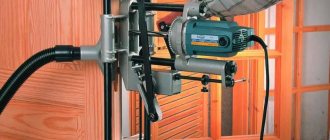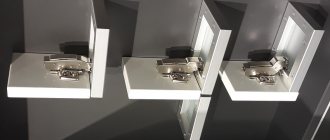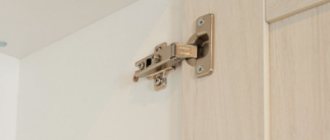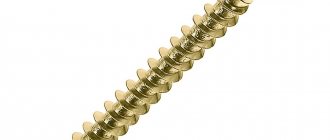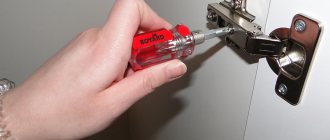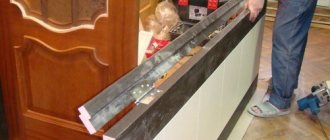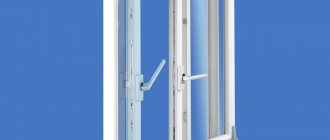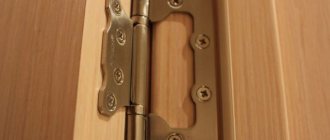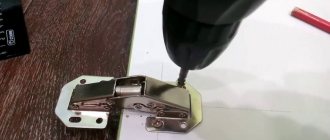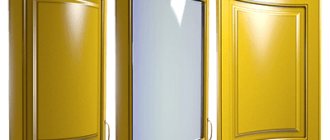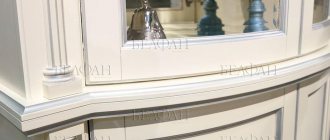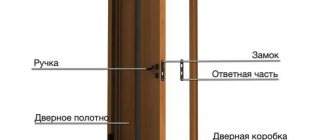Furniture hinges for cabinet doors: how to choose a model with a 45, 60 and 90 degree closer
In modern production, a large number of accessories are used. In this article we will look at furniture hinges for cabinets. These are mechanical devices for opening and closing swing doors. There are many different models sold in stores, and before purchasing, it is advisable to know which option will suit your facades. We will tell you about the design and installation features of canopies.
Types of loops by design
They are hinge units that connect the doors to the cabinet body. Various design solutions make it possible to leave the door leaf open at a certain angle. Based on the method of fastening facades, you can choose the following models:
- Four-jointed.
- Mezzanine.
- Pianos.
- For glass doors.
Quadruple joint
The most common and popular are 4-hinge furniture hinges. They are distinguished by their versatility and high reliability. There are three types of four-hinged hinges, which differ from each other in the method of fastening the shoulder cup to the striker:
Slide-on. The protruding part of the strike plate fits into the shoulder. Fastening is carried out with a fixing screw. The connection has notches on both sides. The length of the arm can be lengthened or shortened by securing the connection with notches.
Clip-on. This system allows you to do without a screw. The parts of the loop are connected by a latch. Such canopies are called quick installation models. The cabinet door can be removed and replaced without tools.
Key-hole. The cup arm is placed with a hole on the counter plate screw. The edges of the opening are inserted under the screw. The mounting hole resembles a keyhole.
Their varieties are used depending on the position of the closed door relative to the wall of the cabinet body. There are the following four-hinged types:
- invoice;
- semi-invoice;
- loose-leaf;
- corner;
- inverse;
- adit.
Invoice
When the door is closed, the hinge fits tightly onto the end of the side wall of the cabinet. They are mainly used en masse in rectangular designs of kitchen furniture. The loop consists of a cup with a shoulder and a striker plate. How both parts are connected can be seen in the figure.
Overhead rotary hinges are installed in bedroom and living room closets, bedside tables and chests of drawers. The mechanisms ensure a tight fit of the doors to the entire perimeter of the furniture opening.
There are overhead mechanisms that do not require deep excavation in the facade mass. They are used when the thickness of the door leaf does not allow making a full recess for the cup. The hinges are fastened without insertion only with screws.
Half waybill
Such designs are used when hanging doors on one wall on both sides. They are placed in wardrobes of several sections, separated by partitions, so that adjacent facades do not interfere with each other when opened. For this purpose, the shoulder is made with a slight bend. The part allows you to maintain dimensions between open sashes of 5 - 10 mm.
Insert
The internal or inset design is designed so that when the door is closed, its facade becomes inside the cabinet opening at the same level as the end of the side panel. The minimum opening angle for the door leaf is 90 degrees.
Unlike previous models, the shoulder of the inset design is more curved. The installation of inset hinges is no different from the installation of other 4-hinged models.
Corner
You should install hinges for corner kitchen cabinets where you want to hang the doors at a certain angle to the side of the cabinet. Various models are designed for installation angles of the facade in relation to the side of the body of 30, 45, 90, 135 and 180 degrees.
Select a corner hinge model using the following table:
| Closed façade corner | Cabinet design |
| 30 - 60 degrees | Beveled end housing |
| At 45 degrees | Trapezoidal body |
| 120 – 135 degrees | Two facades opening with an accordion |
Inverse
Carousel or inverse hinges (crocodile, crab, transformer) are designed to open cabinet doors almost 180 degrees. The open façade is in line with the plane of the load-bearing part of the body. The complex shape of the shoulder allows the door to rotate completely 165 degrees. The transforming loop can be of overhead, semi-overlay and internal design.
Features of purchasing custom-made kitchen furniture- Choosing the perfect sofa
- Upholstered furniture in Perm
Shtolnaya
The straight or adit model is secured with a counter strip to the false panel of the cabinet. The panel looks like an additional strip installed close to the sidewall. Wall hinges are usually installed in kitchen cabinets and corner cabinets under the sink.
All types of four-hinged models from companies such as the Austrian Blum (BLUM), the Spanish Amig (AMIG) and other equally well-known manufacturers are equipped with built-in or overhead door closers.
The device provides slow, soft closing of doors without knocking. To do this, you only need to push the door slightly and it will continue to move slowly until it closes completely. You can install a separate door closer next to a simple facade opening mechanism.
Signs of classification
Awnings can be classified according to a number of defining characteristics:
- Installation location.
- Mechanism connector method.
- Type of attachment to the box.
- Material of manufacture.
- Type of construction.
It should be borne in mind that hinges are selected independently only for doors that are made of MDF or wood (see How to make wooden doors with your own hands - the best solution for any opportunity). Plastic, steel and aluminum products are supplied fully equipped with fittings and canopies.
The location of the hinges determines their type. They can be:
- For entrance structures. They have great strength and overall dimensions. In addition, such products must provide protection against the removal of the doors, which will become an additional obstacle to unauthorized break-in.
- For interior openings. These are simple designs that are lighter and more elegant.
Types: advantages and disadvantages
There is a wide variety of awnings. The main ones are summarized in the table:
| Advantages | Flaws |
| overhead element, types | |
|
|
| Hidden element | |
|
|
| End elements | |
| It is not recommended to heavily load the doors. |
| Mortise | |
| For their manufacture, ordinary steel is used, followed by the application of chromium or nickel. |
| Screw-in | |
|
|
| Corner canopy | |
| These are card canopies shaped like an angle. They have the same advantages. In addition - installation of a hinge on doors with a rebate. | The device cannot be hidden, which spoils the appearance. |
| Double sided canopy | |
| Possibility to open the canvas in two directions. This is very convenient for offices and catering establishments where there are large crowds of people. Otherwise, the products are called bar products. |
Susceptibility to shock loads. Distortion and jamming may occur. |
| Elements on bearings | |
| If the quality of the bearings is poor, the cages may crumble and the balls may fly apart. |
| Door piano products | |
| Such models are morally outdated and have been actively replaced by other types. |
Hinge furniture hinge
The hinge is the familiar awning. The operating principle of the design is implemented using a connecting rod, which serves as a hinge during longitudinal sliding and provides a movable connection of two parts (cards) into a kinematic pair.
This type of fastening is used everywhere for furniture fittings. Their distinctive feature is that they are installed inside the furniture, preserving the aesthetics of the facade of the set. Progress here, too, is moving towards more complex designs - there are a lot of all kinds of modifications and improvements. I wouldn’t be surprised if in some fifty years “smart” hinges start going online, opening through a mobile app and dancing a little at the same time.
Types of furniture hinges
Science has not yet advanced that far and the structure of this object is quite simple. Depending on the method of fastening the door and the design, there are several types of furniture hinges.
Beds with soft panels at the head: stylish solution and comfort- Ideas for arranging furniture in a small room
- Is it possible to place a bed opposite the door?
Structural ones differ in the number of hinges. Among them:
- half-hinged - one component has a static pin, on which another, attached to the door, is placed on top, like a cap. The only fastening that allows you to remove the door without removing the hinges;
- single-hinged - several cards arranged in a checkerboard pattern are combined using one rod;
- four-hinged - the most common, popularly known as a frog, consist of a mounting plate (base), a movable mechanism (arm) of four hinges with a spring and a cup for which a recess is made in the thickness of the door.
- eight-hinged - used in cases where there is nowhere to cut a recess, for example, for glass or thin doors.
Note! Film for pasting furniture
According to the method of attaching the door to the furniture frame, the hinges are divided according to the type of location of the door leaf relative to the body:
- overhead or external - the door is located on top of the body, the moving mechanism is without bending;
- semi-overlay or middle - used when two doors are attached to the frame on both sides, each of which extends half the width of the frame;
- inset or internal - the door is recessed, the body borders it;
- corner – designed for corner furniture, provide opening at angles of 30°, 45°, 90°, 135° and 175°;
- adit or straight - fastening the facade to a false panel, or body, joint to joint, in one plane;
- inverse or rotary - allow you to open the door almost up to 180°, and can be external, middle and internal;
Hinges are also divided into additional subtypes: mezzanine for cabinets that open vertically upward; secretory for a door that folds down; card for folding tables in order to ensure a single plane and a lot of completely non-standard options for all occasions.
Step-by-step instructions for installing door hinges with your own hands
Inserting hinges into doors requires preliminary preparation. Therefore, before starting work, it would be wise to stock up on the following tools:
- Stand for the door block;
- Assembly knife;
- Fraser;
- Template for router;
- Screwdriver;
- Chisel;
- Hammer;
- Simple pencil;
- Roulette;
- Construction level.
The optimal type of hinges for attaching the leaf to the door frame is pre-selected. The quality and duration of operation of the interior door structure will depend on the quality of the product.
At the same time, it is important to take into account which direction the sash is planned to open, because there are right and left hinges (detachable), universal
Universal hinges are suitable for all door blocks, regardless of which side they will open from. In this case, if it is necessary to remove the door leaf, you will have to dismantle the fastening elements themselves.
Next, you need to determine the parameters of the door structure itself in order to correctly calculate the number of canopies.
Mortise hinges, or more precisely the number of them required to secure the doors in the frame, are calculated according to the following criteria:
- Canopy map thickness. The thicker the loops, the better the quality of fastening, the less backlash and sagging of the canvas;
- Electroplating, polishing – uniform coating of the product, i.e. no chips, scratches or bulges;
- Alignment, pairing of individual elements. The product cards must be identical, ideally adjacent to each other;
- Fastenings with bearings instead of standard anti-squeak rings are characterized by high quality.
Inserting hinges involves preliminary marking of the place where they are attached to interior doors. To do this, you need to measure approximately 25 cm from the bottom and top from the edges of the canvas. Next, canopies are applied to the marked points and outlined with a simple pencil. The material is removed to perform hidden installation of the product.
Initially, one part of the fastening cuts into the door leaf, then the second into the frame of the interior block. In this case, the product is inserted with the logo facing up. This will allow the hinges to be installed correctly.
To make a high-quality removal of material from the door block for the installation of hidden fasteners, it is recommended to use a pre-prepared template and a professional milling machine.
Before starting work, the router must be adjusted to the required depth (to the thickness of the product card). And only after preliminary adjustment of the tool is the material sampled.
In the absence of special milling equipment, material is removed from the door leaf and frame in the standard way - using a hammer, chisel, or a sharp construction knife.
Using the hinge template, which was previously drawn on the surface of the door with a simple pencil, a cut is first made with a knife to the depth of the laminate or veneer. This will limit the movement of the chisel when removing material and ensure an even cut along the edges. In the formed frame, holes are also made with a chisel into the slot to the depth of the loop map.
All formed corners are additionally processed using an angular and straight chisel. The quality of the cut is checked. To do this, you need to place the fastener in the prepared recess; it should lie perfectly in it.
The next step is to make holes for screwing in self-tapping screws, with the help of which the awnings will be held on the door leaf. To do this, use an electric drill with a drill of a smaller diameter than the diameter of the screws themselves.
In a similar way, recesses for mortise hinges are made on the frame for interior doors. For the correct placement of holes for fasteners, the box must first be prepared. To do this, cuts are made at 45º. In this case, the height of the canvas and the required gap between it and the floor base must be taken into account.
Installation process
- Determine the location of the furniture hinge cup. It usually has a standard size of 35 mm. The optimal distance from the free edge is from 80 to 120 mm. At this distance, we make an indentation from the edge of the end of 22-23 mm and mark it, making a small hole so that at a critical moment the drill does not slip from the intended point.
- Using a 35mm Forstner drill, drill a recess for the cup. Without fanaticism, so that the hole does not suddenly turn out through.
- Using self-tapping screws or other fasteners provided in the kit, we first fasten the hinge to the facade, then to the box forever. The design of modern furniture hinges provides adjusting screws that allow, without remembering someone’s mother, to adjust the tilt of the facade left and right, or up and down, if necessary.
What it is
Before talking about how to install or replace hinges, it is worth noting that the overhead fittings of the type in question are fasteners designed primarily for connecting doors to cabinet furniture.
[adv1]
Regardless of the intended purpose, color, shape or material of the product, they are united by one feature. This is an installation method, that is, installation on furniture structures. The use of such loops eliminates the need to make special holes for cups. They are simply not provided there. Yes, you may have to drill holes for the screws. But this is done with an ordinary drill, which almost every man has in his household.
This feature saves time and effort. After all, you won’t have to pre-prepare the seats for the hinges. It is enough to make do with the markings.
Types of furniture hinges by design
There are many hinges and canopies used to attach a swing door to the frame of a cabinet or cabinet. Basically, in modern furniture production, four-hinged hinges , which allow the facade to be adjusted in three planes at once:
- higher lower,
- left/right,
- to/from the facade.
All of them consist of two interconnected parts - a bowl with an elbow and a strike plate . Often the strike plate is called a mounting or mounting plate. This article will focus specifically on four-hinged hinges.
Other types of furniture hinges can be combined into one large group as “bowlless” hinges.
piano hinges, card hinges, pin hinges, and heel hinges, known to everyone for fastening interior doors and facades in old furniture . They are rarely used in modern furniture. For example, piano, card and mortise hinges can be used to attach tabletops to the base, movable legs in book-tables. For ordinary cabinets, brass decorative hinges are used as additional decor.
- How to sell furniture active sales?
- Adhesive paper for furniture
- How to attach a countertop to a kitchen unit?
Overhead hinges that do not require drilling of the facade . They come in handy when the thickness of the material chosen for the facade does not allow installing (embedding) a four-hinged hinge due to the depth of the bowl. The only drawback of such hinges is their rigid fastening, which does not allow adjustment in three planes, like four-hinge hinges.
Hinges for fastening specific facades . For example, prefabricated facades made of aluminum frames of different widths are installed on special hinges - you can purchase them together with the profile. Please note that, just like regular four-hinged hinges, they can be overhead or internal, designed for corner cabinets of 45, 135, 180 degrees and facades covering the end of the case.
What to look for when choosing hidden door hinges
When choosing such products, you should pay attention not only to their cost, but also to their performance characteristics. It is better to buy fittings from trusted manufacturers such as AGB, Armadillo, Krona Koblenz and others
There is no need to try to save money by buying loops of dubious origin. Door hinges must ensure not only smooth and easy opening of the door leaf, but also reliable fixation to the frame
It is better to buy fittings from trusted manufacturers such as AGB, Armadillo, Krona Koblenz and others. There is no need to try to save money by buying loops of dubious origin. Door hinges must ensure not only smooth and easy opening of the door, but also reliable fixation to the frame.
The Italian company AGB is a well-known manufacturer of hidden hinges
There are no specific instructions for choosing the right hidden loops. To purchase accessories that meet your requirements, it is enough to determine the following parameters:
- Door opening side. There are right and left loops. You can buy universal models, but their strength is lower.
- Loop size. To do this, you need to decide on the weight of the canvas. If it is 15–25 kg, then hinges 7–8 cm long are sufficient, and when the door weight is 25–40 kg, then canopies 10 cm long must be installed.
- Number of loops. This indicator also depends on the weight of the door leaf. For lightweight structures, it is enough to install two hinges. If the canvas is heavy, then 3-4 canopies will be needed.
- Material. For heavy entrance doors, you need to purchase hinges made of steel or brass. They are more durable, but also expensive. For interior structures, you can use hinges made of tsamak alloy. Their strength is sufficient for reliable fixation of interior paintings, and the cost of such fittings is less than that of steel or brass.
Types of four-hinged furniture hinges
According to the design, according to the way the bowl with the knee is attached to the striker, four-hinge furniture hinges can be of three types:
- Slide-on—the parts of the loop are inserted into each other and connected using a fixing screw that has special notches, thanks to which it reliably “holds” the connection even in a weakened state. This type of loop is the most common.
- Clip-on - the parts of the loop are connected by simple snapping, without screws. The facade can be removed and installed without using any tools - just pull the latch. Clip-on hinges are also called quick-installation hinges.
- Key-hole – on the shoulder of the bowl with a knee there is a hole resembling a key hole in shape - a keyhole. The arm and bar are secured by passing the head of the fixing screw through this hole.
Regardless of the design, all of the above types are divided according to their purpose and installation method - what facade is used in the furniture and how it is attached to the body.
90 degree hinges
*The designation 90 degrees in this case is conditional, it is used to mark hinges that open at a right angle. In fact, the door travel is somewhat greater, reaching about 105-120 degrees when opening. Some manufacturers and sellers of accessories may label this type not “loop 90”, but, for example, “loop 110” - there is no mistake here.
The 90 degree overhead (external) loop has a straight “shoulder”, without bending. Used for facades that completely cover the ends of the side walls of the body (without taking into account the technological gap, which can be 1-5 mm).
Half-overlay (middle, half-outer) loop 90 degrees , the shoulder of the bowl with the knee can be distinguished by a medium bend. Rarely used. For example, in kitchen two-row horizontal cabinets for attaching the bottom door and in three-leaf wardrobes for attaching the middle facade.
The 90-degree inset (internal) hinge is distinguished by a large bend on the “shoulder”, due to which the inset door is carried out when opened outside the body. Rarely used. For example, in office furniture, in which the body is made of thickened 22 mm chipboard and the internal facade emphasizes this detail.
180 degree hinges
A straight (gauge) hinge for false panels is designed for attaching the facade to the sidewall, which is located in the same plane. Most often used in corner kitchens, when using the appropriate corner sink module.
The 165-degree carousel (crab, crocodile, transformer) hinge is recognizable by the characteristic complex shape of the bowl's elbow, which ensures that the door opens completely relative to the body - almost up to 180 degrees. It can also be invoice, semi-invoice and inlay. Differs in the shape of the shoulder.
Types of corner hinges
A 30-degree corner hinge “presses” the façade, located at an angle of 90+30 degrees relative to the body. It is most often used in beveled end cabinets of kitchen units or wardrobes. Installation angle – 120 degrees. Some manufacturers mark it by installation angle, i.e. called a 120 degree loop.
The 45 degree corner hinge is used in trapezoidal single and double door cabinets - for example, kitchen or dressing rooms. Similar to the previous type, it can be called by the angle of installation - a 135 degree loop.
An angular loop of 120-135 degrees most often serves as a connection between two facades, fastened together at a right angle of 270 degrees, which come off like an accordion. In this case, the door without a handle is attached to the body using a carousel hinge from the previous category.
Note! How to paint polished furniture at home?
Corner hinges with a negative opening angle are used extremely rarely, due to design features: end cabinets, as a rule, serve as the end of a row of furniture and it is more convenient to open the door from the other side. But there are projects in which it is more expedient to implement the opposite solution.
The photo shows the main types of standard furniture hinges, without closers , ensuring smooth closing. Hinges with closers are classified similarly - depending on the type of facade and the installation angle relative to the body. They differ in appearance from standard ones only in the shape of the shoulder, inside of which a special movement-absorbing mechanism is built. Also, the closer may not be built-in, but overhead - as, for example, a manufacturer such as Blum offers. But the bulk of offers on the market still do not imply the possibility of improvement. Therefore, if you are determined to install facades with soft closing, without annoying knocking, purchase fittings with closers right away. True, it costs a little more. Before purchasing, I recommend that you read the review on furniture hinges with closers.
A separate group of furniture hinges is for glass facades, with and without drilling glass. Review on glass hinges here.
How to adjust hidden door hinges
After installing the hidden hinges, you need to adjust them. This procedure may also be required due to the fact that the canvas sags during operation.
Hidden hinges are adjustable in three directions:
- Horizontally. To do this, use a hexagon to turn the adjusting screw located on the right side of the hinge at the top. Thus, the canvas is aligned on both sides relative to the box, and the adjustment amount is 1 mm.
- Vertically. To do this, you need to turn the adjusting screw; it connects the two hinge arms. This allows you to even out the gaps between the sash, the floor and the top of the box. The adjustment amount is 1.5–2 mm.
- By pressure. Using a hexagon, turn the eccentric located on the left side of the loop. Achieve uniform pressure of the sash to the frame along the entire perimeter. You can make an adjustment of 1 mm in one direction or the other.
After the hidden hinges have been adjusted, decorative trims can be installed.
Types and characteristics of furniture hinges, fastening rules
The wear resistance of cabinets, tables, bedside tables largely depends on the quality of the fittings. This is a huge category of products, including hundreds of varieties of products, from guides to confirmations. Furniture hinges are irreplaceable elements; they allow you to conveniently open the doors at a certain angle. A few years ago the choice of this additional equipment was small, but today the situation has changed. Accessories such as hinges are classified according to design, materials of manufacture, and installation method, so to select the correct elements you need to know many nuances.
- Basic characteristics
- Basic designs
- Cupless
- Overhead and semi-invoice
- Quadruple joint
- For specific facades
- Manufacturing materials and design
- Varieties according to installation method
- Tips for choosing
- How to attach and adjust
- Video
Installation of bar hinges
The insertion of bar-type door hinges is carried out differently due to the design. The product consists of two spring canopies. The sash can open in any direction and then return to its original location.
To install bar hinges, the installation instructions require the following steps:
- The bar awnings come with a key. If it is not there, you can take a hexagon of a suitable size and loosen the tension of the springs.
- Markings are applied under the fastening plates at the end of the sash and the door frame.
- Installation involves mandatory selection of recesses. Without them, the gap between the canvas and the frame will be about 12 mm.
- The fittings are fixed with self-tapping screws.
Further actions are aimed at adjusting the springs. They can break, so you need to tighten them, but not overdo it. Tension is carried out with a screw clockwise. During the adjustment, check the smoothness of the door opening. If the spring is tightly tightened, the sash will be pulled tightly to the side. If the tension is weakened, the sudden closing of the door leaf will result in a blow to the frame due to the failure of the mechanism to operate in time. Spring compression is checked periodically during operation. Over time they weaken, requiring additional adjustment.
Anyone can install any type of canopy. Such specific fittings as bar hinges are usually used on doors in bars, shops and other public institutions. At home, such canopies are not in demand.
Basic characteristics
Furniture hinges are semi-mechanical devices for fastening the facade to the furniture body and making doors comfortable to use. Installation is carried out using self-tapping screws. The cup of the furniture hinge is fixed to the facade, and the mounting strip is fixed to the frame. There are several types of products depending on the opening angle:
- 45 degrees. Used for corner cabinets, trapezoid-shaped cabinets with one or two doors. This could be kitchen or wardrobe furniture.
- 90 degrees. Allows doors to be opened at right angles. There are several types of loops. Overlays do not require bending and are suitable for facades that completely cover the side walls. Semi-overlays have a medium twist, while internal ones have a large twist. The former are used in three-leaf wardrobes, the latter in office furniture.
- 165 degrees. Carousel loops are distinguished by the complex shape of the bowl elbow. Relevant for corner bedside tables.
- 180 degrees. Used for mounting false panels and connecting the facade to the sidewall. A popular option for kitchen sets.
- 270 degrees. Suitable for any folding door.
The selection of suitable hinges is based on the design features of the products. The purpose of the interior items must be taken into account. Other factors also matter: the intensity of use, the material from which the furniture is made.
Basic designs
Due to the rapid development of technology, the requirements for the design and production of interior items have increased. Accordingly, the range of modern furniture hinges has expanded. Today, products are divided into cupless, overhead, semi-overlay, and four-joint groups. There are also models for attaching non-standard facades.
Cupless
The classic design consists of two thin plates connected to each other. There are holes along the edges for screwing in self-tapping screws; the opening angle is 90 degrees. Such furniture fittings are divided into several types:
- Pianos. Mechanisms with one hinge act as hidden fasteners. They are used in cabinets, kitchen cabinets, poufs with a raised seat.
- Heel. Hinges consisting of a pair of strips. The main disadvantage of the models is their low load-bearing capacity. Relevant only for light facades.
- Card. The design is similar to their piano counterparts; the fasteners are fixed using holes located along the edges of the plates. There are various sizes of mechanisms. Scope of application: boxes, furniture in retro style.
- Pin. In appearance they resemble card loops, but special pins are used for installation, which can vary in length. For light structures, products with 2-3 fasteners are selected, for heavy ones - with 4 or more.
The heel loop, like other cupless options, is rarely used in furniture production today. These are mainly decorative items that complement folding table tops. The designs have also found application in the installation of interior doors.
Overhead and semi-invoice
Overlays are products that are mounted without drilling. Suitable for thin facades that do not allow the installation of mortise hinges. This method of fastening has become widespread and is used in any type of furniture: living rooms, kitchens, bedrooms, as well as cabinets and chests of drawers. Opening angle - 110 degrees.
Half-overlay or middle loops cover the side of the case only halfway. They are installed in furniture if the facades are attached to a common partition and open in different directions. The angle is the same as for overhead ones - 110 degrees.
Installation of overhead and semi-overlay furniture hinges without insertion is relevant for non-standard facades. The main disadvantage of the models is the impossibility of adjusting the fit in different planes.
Quadruple joint
Universal hinges are durable and can withstand high loads. Suitable for furniture doors with opening angles from 92 to 175 degrees. The standard diameter is 35 mm, but other options are also available.
The four-hinged hinge consists of a bowl, a shoulder, and a mounting strip. Additionally, the models are equipped with decorative overlays. Smooth, silent closing of doors is ensured by closers. There are several types of such products:
- Internal. It is used in cases where it is necessary to place the façade inside the body so that the hinges on the sashes do not come into contact with adjacent walls. There is a pronounced bend at the base.
- Angular. Used to fix the facade at a certain angle. Due to the design features, hinges are installed without insertion. Standard models are designed for 30, 45, 90, 135 or 175 degrees.
- Inverse. They consist of a pair of plates with holes, held together by a movable mechanism. Relevant for swing doors, they open 180 degrees.
- Mezzanine. They are used to fix horizontal facades that open upward. Optimal for cabinets, including kitchen cabinets. The basis of the mechanism is represented by a spring.
- Secretarial. The structure is similar to card furniture hinges; they consist of two flat elements fastened with a hinge. Used to fix horizontal doors that open downwards.
- Adit. They are used to install facades on side posts adjacent to the walls. Relevant for attaching false panels.
- Ombre. They provide 180 degree opening, so they are used to equip folding tables. Mounted on the ends of structures to fix hinged doors.
- Pendulum. They are also called bar hinges; they got their name due to the opening angle of 180 degrees, similar to the doors in American bars.
A common name for four-hinge furniture hinges is frog. The moving part of the design, consisting of 4 hinges and a spring, looks like a bouncing amphibian. The models are characterized by significant advantages: reliability and versatility of use.
The bar hinge consists of a pair of cylindrical pins that connect 3 metal plates. Due to the springs, the door can be opened in any direction.
Before going to the store
Before you go looking for door hinges, you need to clarify what features the door design has
Please note the following points:
- is there a porch;
- what is the weight of the canvas;
- how intensively the door will be used;
- in which direction the sash opens;
- width of the door leaf;
- what degree of burglary resistance is required to be ensured.
It remains to decide which loops to choose and in what quantity.
Material
Domestic and foreign manufacturers present models made of various metals and alloys, distinguished by special properties.
- Brass plated. The base is aluminum, zinc or steel alloys. The brass coating ensures easy movement of rubbing parts and protects them from corrosion.
- Brass. Strong and durable material easily withstands high loads and the impressive weight of the door leaf. They are produced in polished form or coated with chrome.
- Steel. The most durable products. Still, their price is appropriate. Therefore, installing them on interior walls is not always economical. In most cases, they are used for entrance groups.
Basic characteristics
Furniture hinges are semi-mechanical devices for fastening the facade to the furniture body and making doors comfortable to use. Installation is carried out using self-tapping screws. The cup of the furniture hinge is fixed to the facade, and the mounting strip is fixed to the frame. There are several types of products depending on the opening angle:
- 45 degrees. Used for corner cabinets, trapezoid-shaped cabinets with one or two doors. This could be kitchen or wardrobe furniture.
- 90 degrees. Allows doors to be opened at right angles. There are several types of loops. Overlays do not require bending and are suitable for facades that completely cover the side walls. Semi-overlays have a medium twist, while internal ones have a large twist. The former are used in three-leaf wardrobes, the latter in office furniture.
- 165 degrees. Carousel loops are distinguished by the complex shape of the bowl elbow. Relevant for corner bedside tables.
- 180 degrees. Used for mounting false panels and connecting the facade to the sidewall. A popular option for kitchen sets.
- 270 degrees. Suitable for any folding door.
The selection of suitable hinges is based on the design features of the products. The purpose of the interior items must be taken into account. Other factors also matter: the intensity of use, the material from which the furniture is made.
Questions and answers about butterfly loops
| Question | Answer |
| After installation, the door squints or does not close tightly, what does this mean? | This means that the hinges are screwed with a deviation from the common central axis, which runs along the rod of the awnings. You need to take a plumb line, find out which loop is skewed and remount it. |
| Is it true that fabric on butterfly hinges sags over time? | Provided proper installation, canvases weighing up to 20 kg are not in danger of sagging. If the weight is close to the upper limit of 30 - 40 kg, then for insurance you can attach 3 or even 4 canopies to one canvas. |
| Is it possible to hang solid wood doors on butterfly hinges? | Highly undesirable. The weight of the wooden panel starts from 35 kg and can reach up to 80 kg; with a high degree of probability, such doors will sag. |
| How good are butterfly hinges with bushing rings instead of bearings? | If the canvas weighs up to 15 kg, then it can be safely mounted on hinges with bushing rings; they are 30–40% cheaper than models with bearings. |
| Why is the outer part of the butterfly attached to the box, and the inner part to the canvas? | The outer card is wide and the holes go along the perimeter; therefore, when screwing a self-tapping screw into the very edge of the canvas, there is a possibility of delamination or cracks. |
Types of furniture hinges by purpose
“Straight” hinges with an opening of 90-110 degrees
This includes standard furniture types, overhead, semi-overlay and internal types.
The invoice is also an external loop. Designed for installation of facades that completely cover the body from the sidewalls (not counting the technological gap of 2-3 mm for each door).
A half-overlay loop is used when the sidewall with fasteners is covered halfway. Typically used in three-door cabinets and double-opening wall cabinets.
Inset - also known as an internal loop. Used to install facades recessed relative to the body. But more often it is used for wall cabinets with a top opening, if the top lid hangs like a “visor”.
Adit, straight - it is also a loop for false panels. To install the facade not on the sidewall, but on a false panel located in the same plane as the facade. Mainly used in corner kitchen modules and on sink tables.
Corner hinges with standard opening 90-110 degrees
They are mainly used for corner facades located at 45 (135) degrees relative to the body, less often - for end modules - with an opening angle of 30, 60 degrees.
But in reality there are many more corner loops. But they are not in particular demand, since the need for them arises very rarely, in specific design projects.
Inverse hinges with increased opening angle up to 180 degrees
They also come in overhead, semi-overlay, inset, adit, and corner, but they provide a much larger opening angle, practically turning the façade 180 degrees. Needed to increase access to the interior of the cabinet when the standard 90-degree opening is not enough. Such loops are also called transformers, due to the complex design of the shoulder.
Carousel loop, aka crocodile
A specific type of hinge used for transformable doors that open like an accordion. Most often it can be found in sink tables, in combination with a direct inverse loop.
Almost all of the considered types of four-hinge furniture hinges are produced both in a standard version and are equipped with a closer - a special soft-closing mechanism. The closer can be built into the hinge arm or snap onto the bowl or arm.
Butterfly loop with rebate
Butterfly hinges for interior doors that are equipped with rebates are more reliable. This is reported by numerous reviews from masters. These loops have several variations. They are:
- Left;
- Rights;
- Universal.
The last one listed can be attached to any door, but with others it is more difficult. To understand which hinge to choose, you need to face the doorway: if the product should be attached to the left hand, then you need to buy “right” butterflies, and if on the right, then “left”.
Most often, hinges are made of brass or steel. Careless sellers may claim that their product is very reliable, but you should not take their words. It is worth choosing a hinge with a coating, which will additionally protect the item from corrosion.
Manufacturing materials and design
Card loops, bar loops and other types of fasteners are made from different materials. The most common are steel and brass. When choosing, you need to take into account their properties and features:
- Steel. It has a shiny surface and an attractive appearance. Pros: high strength, affordable cost. Disadvantages: not suitable for the bathroom and other rooms with high humidity, rough ends, seams, have noticeable play, and after a couple of years they begin to creak.
- Brass. Hinges are manufactured to exact dimensions, so each product can be used as a template for insertion. Pros: the material does not rust, does not need lubrication, the surface is perfectly smooth, carefully processed, minimal play, high-quality galvanic coating, noble color. Disadvantages: the cost is several times higher than steel models, the products wear off during long-term use.
A mortise or invoice hinge made of brass will be of better quality in all respects compared to its steel counterparts, but it will also be 5–7 times more expensive. When choosing, you should be guided by your budget and feasibility of use.
Steel
Brass
Awnings differ not only in materials of manufacture, but also in design. Beautiful products will perform practical and decorative functions. Forged hinges fit organically into modern, loft, Provence, and Baroque interiors. Antique decoration is relevant for vintage, country, retro, high-tech styles, it is also in harmony with minimalism, gold plating is with the classic direction, art deco.
Advantages of hidden hinges
Surely you chose to install hidden hinges for a reason, and this is the right choice. Here are the qualities you can use after installing the hinges:
- Absolute safety. Even with all their desire, intruders will not be able to enter your home by cutting off the hinges, since hidden-type products are hidden from outside interference.
- High strength. Hidden hinges can support the weight of not only wooden, but also heavy metal entrance doors - no restrictions on installation.
- Decent reliability. With proper care, standard hidden-type hinges will last you for many decades - perhaps even longer than the door itself.
- Aesthetics. Hidden hinges cannot be seen from the outside of the door, making door leaves look more attractive, especially for wooden ones.
Aesthetic appearance of hinges
Now that you are sure that your choice is correct, you can prepare to install hidden door hinges.
Installation and opening angles
The MDM assortment includes hinges of the Slide-on 95 and Mini 12 series with various installation and opening angles. Together with special platforms for changing the angle, the MDM range allows you to develop a design of any, even the most non-standard configuration. The installation angle (installation angle) is the angle at which the door is in relation to the side of the cabinet in the closed position. The standard installation angle is 90°. For kitchen corner elements, hinges with installation angles of 30°, 45°, 120°, 135°, 180°, 270° (carousel hinge) are provided. The installation angle, as well as the overlay (overlay, inset or middle hinge), is determined by the type of hinge arm (see Ferrari article description). The opening angle (opening angle) is the angle at which the door opens from the closed position. For a standard hinge it is 110°; hinges with opening angles of 95°, 125°, 170° (carousel hinge) are also available. Hinges with non-standard installation and opening angles are used quite rarely, compared to standard straight hinges, and usually find their application in corner furniture elements. In cases where the hinges available in the MDM range are not suitable for creating a non-standard installation angle (for example, 10°), you can use platforms to change the installation angle. These pads are made of plastic and are placed under the mounting pads of the hinges when they are installed. In addition to plastic platforms with fixed angles for hinges of the Slide on series, there is a Compasso platform with dynamic angle changes in the range of 5°-22°.
